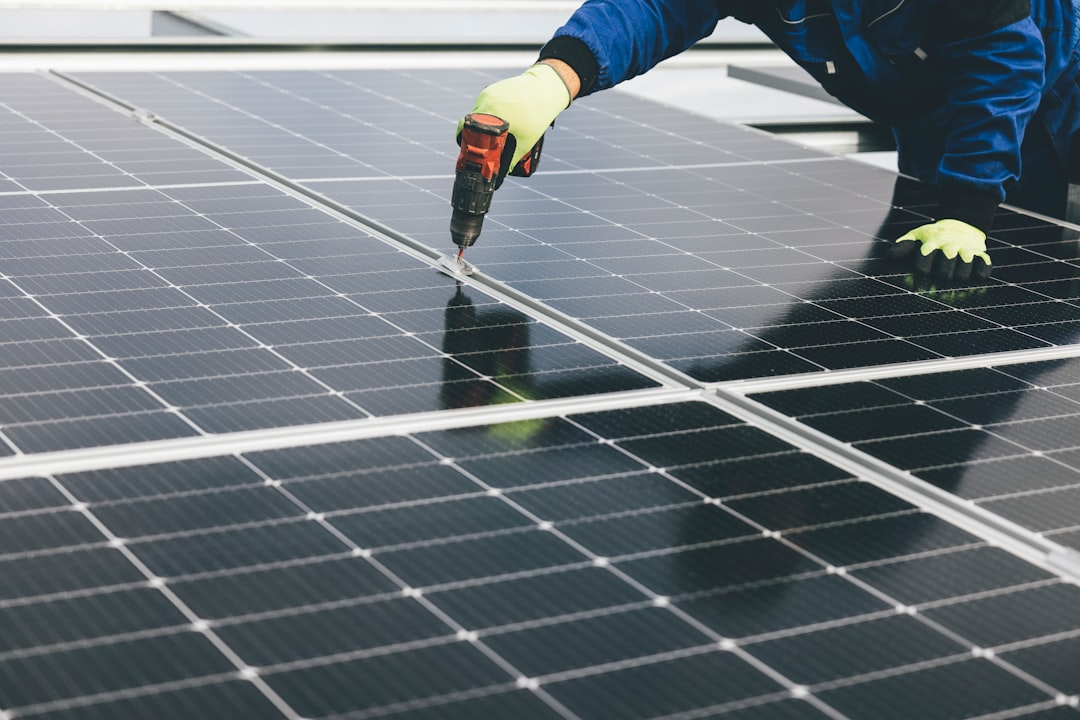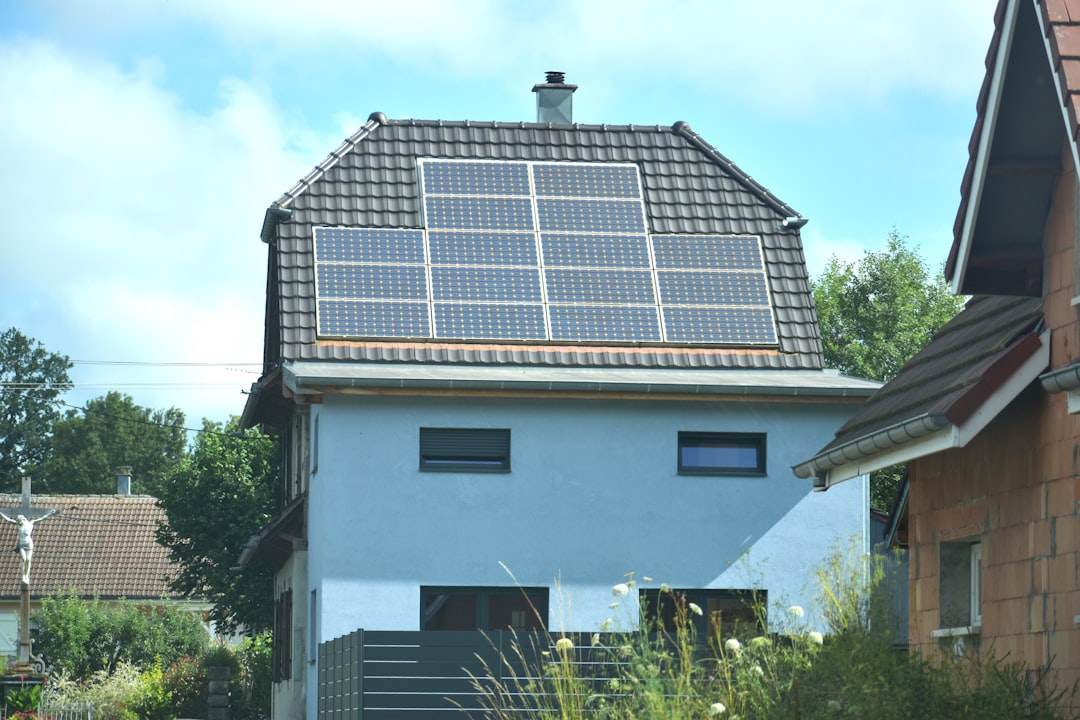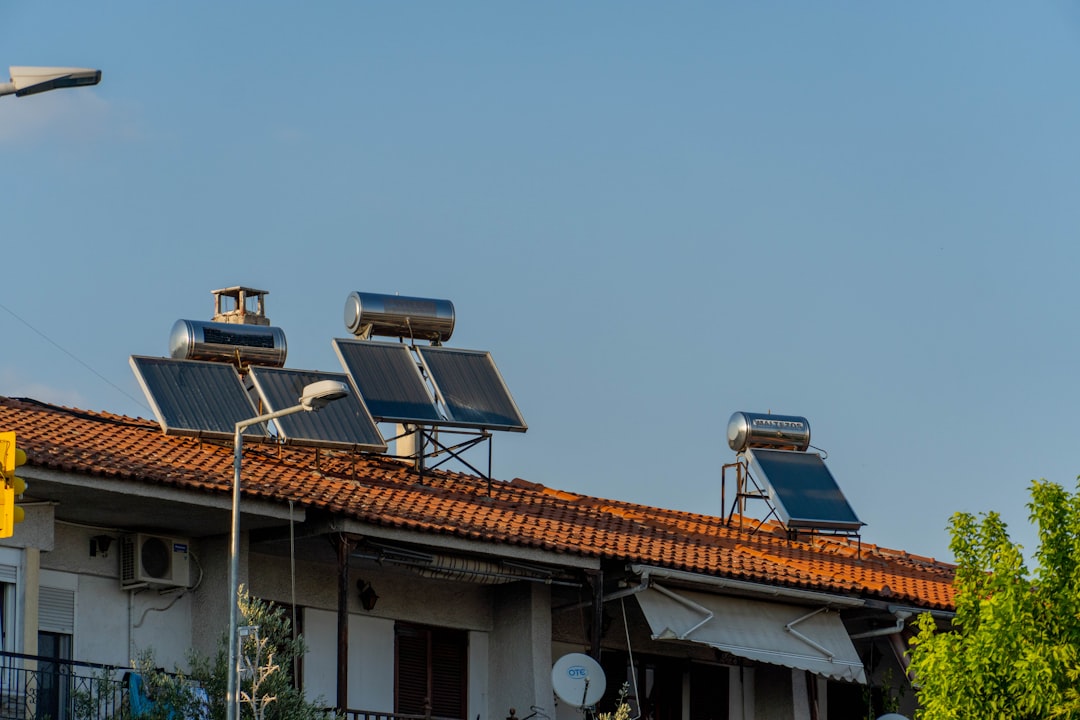

Engage prospects with a scan and streamline customer engagement with FREE QR code marketing tools by Sona – no strings attached!
Create a Free QR CodeFree consultation

No commitment

Engage prospects with a scan and streamline customer engagement with FREE QR code marketing tools by Sona – no strings attached!
Create a Free QR CodeFree consultation

No commitment
The solar energy contractor landscape is experiencing rapid transformation as homeowners and businesses invest in green energy solutions to reduce costs and meet sustainability targets. Yet, many contractors still face persistent challenges turning initial offline interest, whether from a neighbor noticing a yard sign or a building manager stopping by a trade show booth, into actionable digital leads. Without a reliable way to link these real-world engagements to digital workflows, prospects may slip through the cracks, lead details can be lost, and valuable follow-up opportunities are often missed.
This disconnect is especially problematic in a sector where complexity and high-consideration purchases require ongoing education, careful nurturing, and perfect timing. It is common for prospects to show significant intent: scanning a QR code on a sign, picking up a brochure, or browsing installation case studies, yet never submitting their contact details. That leaves contractors with limited insight into which engagements are driving true opportunity and little ability to attribute marketing spend to outcomes.
QR codes now offer an immediate, app-free bridge between these offline touchpoints and the digital customer journey. Whether integrated into job site signage, expo booth materials, or post-installation labels, QR codes not only streamline lead capture but also enable contractors to track, analyze, and act on intent data as soon as a scan occurs. By weaving QR codes into core workflows, solar energy contractors can move from reactive lead chasing to proactive, data-driven engagement, reducing missed opportunities and better positioning themselves in a competitive market.

Solar energy contractors frequently contend with barriers such as missing out on quality prospects when offline engagements cannot be tracked or followed up digitally. Printed brochures and static yard signs are easily forgotten, and handwritten inquiry slips often lead to incomplete CRM records and lost opportunities. The outcome is painful: high-value prospects may interact with your brand but never make it into your lead funnel or nurturing workflows, causing needless leakage in your pipeline.
Modern approaches replace these limiting analog processes with trackable conversion points enabled by QR codes. Instead of hoping passersby remember your URL, you can offer a scannable path to instant value like a solar savings calculator, a pre-qualified estimate request, or a short video case study. Each scan is automatically captured with metadata such as time, device, and location. With Sona QR, that data flows directly into your CRM, triggers alerts for your sales team, and kicks off personalized nurture sequences.
By leveraging platforms that automate audience tracking, scoring, and retargeting, contractors reduce the risk of leads slipping away and instead build a robust, actionable database. You move from missed connections to meaningful engagement at every touchpoint and translate curiosity into conversions with speed and consistency.

Many contractors struggle to maintain visibility into who is engaging with their materials when leads do not formally submit a form or schedule a call. This lack of visibility means potential leads remain anonymous and go unpursued, ultimately reducing conversion rates and ROI on marketing spend. In solar, where purchase cycles are long and involve education around incentives, roof suitability, and financing, not being able to track early intent signals is costly.
QR codes close this gap by making every offline impression measurable and actionable. A single scan can open a calculator that estimates bill savings, a map of neighborhood projects, or a booking form for an onsite assessment. Unlike phone numbers or generic URLs, QR destinations can be personalized by neighborhood, event, or offer, then updated without reprinting.
Teams equipped with these insights can segment follow-up by interest or region, prioritize warm prospects who show high buying intent, and ultimately turn more offline interactions into closed business opportunities. Instead of guessing which outreach to prioritize, your data points the way.

Solar energy contractors have historically relied on one-size-fits-all print assets in the absence of trackable alternatives, which makes attribution difficult and misses the chance to guide prospects toward the best next step. QR codes, especially in dynamic formats, address these challenges with flexibility that matches the complexity of the solar journey.
With a platform like Sona QR, you can generate, manage, and update all of these formats in one place, tag them by campaign or region, and feed scan data directly into your analytics and CRM tools. Dynamic codes are ideal for campaigns and assets that may evolve, while static codes are sufficient for permanent labels that rarely change.

QR-enabled touchpoints unlock growth wherever contractors currently experience lost visibility or insufficient follow-up. The key is to place scannable experiences where curiosity already exists and to connect those moments to clear next steps.
By focusing QR efforts where interest already exists but typically goes untracked, solar contractors convert passive impressions into data-rich, actionable leads. This approach also exposes the strongest channels for expansion so your team can double down on what works.

Contractors often risk losing high demo interest when there are gaps between in-person engagement and actionable digital follow-up. QR codes naturally bridge this gap by transforming any surface into a path toward education or conversion, while giving your team the context needed to tailor next steps.
These use cases build a journey where offline actions inform digital experiences and data informs your next move. No buyer is left behind because the mechanism for capture is always within reach and tuned to the context of the moment.
A major challenge for growing contractors is segmenting broad, disconnected prospect pools into actionable audiences for retargeting and personalized communication. Solar involves distinct segments: residential homeowners, commercial facility managers, municipal buyers, and existing customers with upsell potential. QR segmentation turns each scan into a signal about who someone is and what they want.
Begin by deploying multiple QR codes tuned to different journey stages and contexts, then tag each code with descriptive metadata. A homeowner who scans a neighborhood flyer to try a savings calculator belongs in a different cohort from a property manager who scans a case study booklet. With that distinction, your follow-up can be precise: the homeowner receives education on tax credits and financing, while the property manager receives multi-rooftop ROI scenarios and references.
With Sona QR, each code becomes a smart entry point that captures the context needed to personalize follow-up at scale. Your marketing moves from broad campaigns to individualized journeys powered by real behavior.
Many solar energy campaigns falter due to disconnected messaging or wasted spend across channels, leading to confused prospects and inconsistent experiences. QR codes serve as connective tissue by linking offline curiosity to clear digital next steps that can be measured and optimized. When every channel includes a scannable gateway, your funnel gains a consistent onramp that accelerates prospects from first impression to booking.
Start by mapping the channels you already use and layering in QR-enabled destinations that match their context. Ensure that each scan leads to a tailored page rather than a generic homepage. The destination should match the expectation set by the physical asset. For example, a community event banner that promises a “Try the savings calculator” should land on that tool immediately, not a general marketing page.
QR codes function as the offline onramp to your digital marketing engine. With a centralized platform like Sona QR, you can manage all your codes, monitor performance in real time, and sync scan data with your CRM and ad platforms to maintain a single, coherent view of the buyer journey.
Even the best QR concepts can fall short without thoughtful execution and continuous optimization. Solar contractors who succeed treat QR campaigns like a system: each asset has a role, each scan has a destination, and every interaction is measured and improved. The following checklist gives your team a repeatable playbook you can apply across neighborhoods, events, and seasons.
Begin by clarifying the business problems you want to solve. Are you trying to capture more qualified estimate requests from neighborhoods where you are already installing? Do you want to turn service calls into referral opportunities? Or are you focused on converting trade show interest into booked assessments within 7 days? Your answers guide the code types, the creative, and the destinations you build.
The result is a campaign infrastructure where every touchpoint is designed to collect, measure, and capitalize on buyer signals. Over time, this system compounds: better placements, smarter offers, and more precise follow-up steadily increase booked assessments and closed deals.
A central pain point for solar contractors is the lack of visibility into how offline engagements convert. Yard signs, brochures, and event conversations are powerful, yet without data they remain guesswork. Real-time QR analytics change that by tracking the full chain from scan to form fill, appointment, and contract. When scan activity flows into your CRM and analytics tools, you can attribute revenue to the specific assets and messages that drove it.
The analytics you collect should guide both tactical and strategic decisions. Tactically, you can identify which neighborhoods respond to a “no money down” offer versus a “tax credit” angle and adjust your door hangers accordingly. Strategically, you can see whether events or direct mail are more efficient at generating qualified leads and reallocate budgets to the top performers. This turns QR codes from a convenience into a performance lever.
With Sona QR and Sona, you can capture detailed scan data, visualize performance by campaign and region, sync behavior into your CRM, and connect anonymous scans to known buyers through identity resolution and see Sona’s offline attribution in action along with multi-touch attribution. You move beyond raw scan counts to a complete picture of how QR engagement contributes to pipeline and revenue.
Scaling QR adoption introduces new challenges: maintaining attribution across dozens of assets, keeping destinations current, and ensuring that scans trigger the right next step. Leading solar teams create operational guardrails so codes stay organized, measurable, and useful for sales and service.
Consider establishing a naming convention for every QR code that includes campaign, location, and purpose. Combine that with UTM parameters in each destination URL so traffic can be differentiated in analytics. Then build automation so important scans result in immediate follow-up by email, SMS, or a sales alert, which is essential for conversion velocity.
Start creating QR codes for free at start creating QR codes for free and have a working pilot in minutes. The faster your team starts collecting scan data, the faster you can refine placements, messages, and follow-up to drive measurable growth.
The traditional approach to offline lead capture in solar energy contracting too often results in a leaky funnel, where even high-intent prospects go unnamed, untracked, and ultimately unconverted. QR codes transform every physical asset, from signage to brochures to trade show collateral, into an interactive, data-rich experience. The result is powerful: fewer missed opportunities, more actionable insights on buyer behavior, and a connected journey that spans awareness, education, and conversion.
By weaving QR code strategies into their marketing and sales operations, solar energy contractors move beyond passive impressions to active, measurable engagement. Crew members in the field become catalysts for data capture. Marketing gains clarity on what works and what to stop. Sales receives prioritized leads with context and intent signals that accelerate deals. Customers experience faster answers and easier actions at every stage.
If you are ready to build this capability, start with a simple pilot in one neighborhood or at one event. Create dynamic QR codes tied to calculators, booking forms, and maintenance guides. Deploy them on yard signs, mailers, and booth materials. Measure scans, iterate messaging, and route high-intent actions to your sales team immediately. Within weeks, you will have the insights needed to scale the program with confidence.
With Sona QR, you have everything you need to capture demand at the source and convert it into measurable results. Generate codes, track performance, sync with your CRM, and attribute revenue to the assets that drive it. In a rapidly evolving energy market, this approach provides the adaptability and intelligence necessary to thrive, differentiate, and serve the needs of a new generation of solar adopters.
QR codes have transformed the solar energy contracting industry from static information sharing into dynamic, measurable engagement channels. Whether it’s streamlining customer onboarding, enhancing post-installation support, or providing instant access to system data, QR codes replace cumbersome paperwork with quick, mobile-friendly interactions that capture real-time insights and drive higher client satisfaction.
Imagine knowing exactly which service brochures or installation guides lead to new customer inquiries—and updating those assets instantly without reprinting. With Sona QR, you can create dynamic, trackable QR codes in seconds, monitor every scan, and connect that engagement directly to your business growth. No missed leads, no outdated materials—just smarter, more efficient client connections.
Start for free with Sona QR today and turn every scan into a new opportunity to grow your solar energy contracting business.
Hiring a solar energy contractor helps homeowners and businesses reduce energy costs and meet sustainability goals by professionally installing and managing solar energy systems.
Choose a reliable solar energy contractor by evaluating their ability to provide ongoing education, timely follow-up, personalized engagement, and use data-driven tools like QR codes to track and nurture leads.
Solar energy contractors provide services including site assessments, solar panel installation, maintenance support, warranty registration, financing pre-qualification, and customer education.
The article does not specify exact costs for installing solar panels with a contractor.
The article does not list specific solar energy contractors or rankings by area.
Solar energy contractors can improve lead capture by using QR codes on signage, brochures, and other materials to link offline interest directly to digital workflows and CRM systems for automatic tracking and follow-up.
Useful QR code formats include web links to calculators and case studies, lead capture forms, vCards for contact sharing, SMS or email templates, documents like warranty guides, app download links, and Wi-Fi access codes for events.
QR codes enable real-time analytics and attribution by tracking scans by location, asset, and campaign, allowing contractors to see which materials and channels drive engagement and revenue.
Contractors should place QR codes on installation yard signs, brochures for property managers, direct mailers, trade show materials, product packaging, and equipment labels to convert curiosity into actionable leads.
Contractors can segment audiences by tagging QR codes with metadata about journey stage, intent, location, and channel, then feeding this data into CRM and ad platforms for personalized communication and retargeting.
Steps include defining clear goals, selecting appropriate QR code types (static or dynamic), designing and testing scannable codes with brand elements, deploying codes in high-impact locations, and continuously tracking and optimizing performance.
QR codes transform offline materials into interactive, data-rich touchpoints that deliver instant value, educate prospects, capture intent, and enable personalized follow-up, improving conversion rates and customer satisfaction.
Platforms like Sona QR allow contractors to generate, manage, and update QR codes centrally, capture scan metadata, sync data with CRMs, and analyze campaign performance for informed decision-making.
Tracking offline engagement is important because it prevents high-intent prospects from going untracked, improves marketing ROI, and enables timely, personalized follow-up that accelerates sales.
QR codes on maintenance kits, inverter labels, and warranty documents link customers to how-to videos, support chat, and warranty registration, reducing service calls and improving customer satisfaction.
Use Sona QR's trackable codes to improve customer acquisition and engagement today.
Create Your FREE Trackable QR Code in SecondsJoin results-focused teams combining Sona Platform automation with advanced Google Ads strategies to scale lead generation

Connect your existing CRM

Free Account Enrichment

No setup fees
No commitment required

Free consultation

Get a custom Google Ads roadmap for your business






Launch campaigns that generate qualified leads in 30 days or less.
